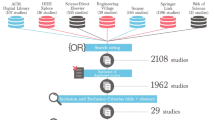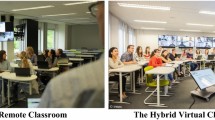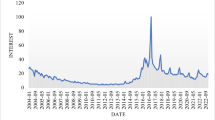Abstract
This paper is centred on one of the main results of the ELeGI project, namely its software architecture for the delivery of personalised formal-learning experiences. The architecture has been designed and developed: (1) taking into account a general model for the personalisation of learning experiences, allowing us to obtain a solution that is flexible with respect to the pedagogies, and (2) on top of service oriented grid technologies, allowing us to obtain several advantages in the process of creation and delivery of personalised learning experience like, for instance, ubiquitous and seamless access to heterogeneous learning resources distributed over the network. In order to validate our result, the first prototype of the ELeGI architecture has been deployed on a virtual organisation consisting of three geographically distributed nodes. Each node of the VO provides services and learning resources that have been adopted in the creation and delivery of a personalised learning experience about the Torricelli’s law and based on the virtual scientific experiment model. The case of study has been successfully executed and has given us a proof of our assumptions related to the added value of the service oriented grid mainly in terms of: (1) capabilities to access educational resources distributed over the network, that is relevant in achieving the personalisation of learning experiences, and (2) high level of dynamicity and adaptiveness in the creation and delivery processes of a personalised learning experience.







Similar content being viewed by others
Notes
Virtual Laboratory for Automatics and Control Engineering developed at the University of Bochum, in the scope of WP9 of ELeGI. This tool can provide university students with easy access to engineering applications at anytime and from any computing environment
A Learning Activity is a paradigm provided by IMS-LD language (http://www.imsproject.it).
References
Gaeta M, Ritrovato P, Salerno S (2005) Making e-learning a service oriented utility: the European learning grid infrastructure project. In: Towards the learning GRID: advances in human learning services. “Frontiers in Artificial Intelligence and Applications”, IOS, Amsterdam, August 2005, pp 63–75. ISBN: 1-58603-534-7
Foster I, Kesselman C (1999) The grid: blueprint for a new computing infrastructure, Morgan Kaufmann
Albano G, Gaeta M, Salerno S: E-learning: a model and process proposal in the International Journal of Knowledge and Learning, vol 2, issue 1/2 2006 Inderscience Publisher, ISSN (Online): 1741–1017 - ISSN (print): 1741–1009, pp73–88
Kolb DA (1984) Experiential learning. Prentice Hall, Englewood Cliffs
Brousseau G (1997) Theory of didactic situations in mathematics. Kluwer Academic, Dordrecht
Gaeta A, Gaeta M, Orciuoli F, Ritrovato P (2005) Enabling technologies for future learning scenarios: the semantic grid for human learning. In: Proceedings of the 2 international workshop on collaborative and learning applications of grid technology and grid education CLAG + Grid.edu, in conjunction with the IEEE international symposium on cluster computing and the grid (CCGrid 2005), Cardiff, 9–12 May 2005
Foster I, Kesselman C, Tuecke S (2001) The anatomy of the grid: enabling scalable virtual organizations. Int J Supercomput Appl 15(3):200–222
Foster I et al.: OGSA™ WSRF basic profile 1.0. Recommendation GWD-R GGF, OGSA WG. Available at https://forge.gridforum.org/projects/ogsa-wg/document/draft-ggf-ogsa-wsrf-basic-profile/en/38. Accessed 7 Sep 2005
Foster I et al.: The open grid services architecture, version 1.0. Report GFD-I.030. GGF, OGSA WG. Available at http://www.ggf.org/documents/GFD.30.pdf. Accessed 25 Jan 2005
IMS (2003) Global learning consortium, IMS learning design v1.0 final specification. Available at http://www.imsglobal.org/learningdesign/index.cfm
Schaeck T, Thompson R: Web services for remote portlets (WSRP) Whitepaper. Available at http://www.oasis-open.org/committees/tc_home.php?wg_abbrev=wsrp. Accessed 28 May 2003
De Roure D, Jennings NR, Shadbolt NR (2003) The semantic grid: a future e-science infrastructure. In: Berman F, Fox G, Hey AJG (Eds), Grid computing––making the global infrastructure a reality, Wiley, London, pp 437–470
Capuano N, Gaeta A, Laria G, Orciuoli F, Ritrovato P (2005) How to use grid technology for building next generation learning environments. In: Ritrovato P, Allison C, Cerri SA, Dimitrakos T, Gaeta M, Salerno S (Eds) Towards the Learning GRID: advances in human learning services, vol 127, frontiers in artificial intelligence and applications, pp 252. ISBN: 1-58603-534-7, Hardcover, pp 182–192 (November 2005)
Capuano N, Gaeta M, Micarelli A, Sangineto E (2003) An intelligent web tutoring system for learning personalization and semantic web compatibility. In: Proceeding of PEG 2003, St. Petersburg, Russia
Dimitrakos T, Gaeta M, Laria G, Mac Randal D, Ritrovato P, Serhan B, Yuan F, Wesner S, Wulf K (2003) An emerging architecture enabling grid based application service provision. In: Proceedings of 7th IEEE international conference EDOC, Brisbane, Australia, 16–19 Sept 2003, pp 240–250
Humphrey M, Wasson G (2005) “Architectural foundations of WSRF.NET”. Int J Web Serv Res 2(2):83–97
ConferenceXP, Microsoft ConferenceXP homepage, available at http://www.conferencexp.net/community/default.aspx
Allison C, Michaelson R (2004) Design consideration for an ELeGI portal. In: Proceedings of the 3rd international LeGE-WG workshop, Berlin, Germany, 3 Dec 2003
K., Blinco et al. (2004) Trends and issues in E-learning infrastructure development. White paper for alt-i-lab 2004 prepared on behalf of DEST (Australia) and JISC-CETIS (UK), July
Albano G, Gaeta M, Ritrovato P, IWT: an innovative solution for AGS e-Learning model, vol 3, (double) issue 2/3, 2007 of the international journal of knowledge and learning. Interscience, New York, ISSN (Online): 1741–1017, ISSN (Print): pp 1741–1009
Gaeta A, Gaeta M, Meo G, Orciuoli F, Ritrovato P, Stefanucci S (2006) How the ELeGI software architecture enables the creation and delivery of adaptive unit of learning: the implementation of the VSE model, proceeding of the workshop 4d: next generation in technology enhanced learning, e-challenges, Barcelona, Spain, 25–27 Oct 2006
BuddySpace, Available at http://kmi.open.ac.uk/projects/buddyspace/
Globus Toolkit, Available at http://www.globus.org/toolkit/
Acknowledgments
This work is partially supported by the European Commission under the Information Society Technologies (IST) programme of the 6th Framework Programme for RTD: project ELeGI, contract IST-002205. This document does not represent the opinion of the European Community, and the European Community is not responsible for any use that might be made of data appearing therein. We are very pleased to thank all the people involved in the ELeGI project and, especially, the ones involved in the Architecture Definition, Design and Implementation.
Author information
Authors and Affiliations
Corresponding author
Rights and permissions
About this article
Cite this article
Gaeta, A., Gaeta, M. & Ritrovato, P. A grid based software architecture for delivery of adaptive and personalised learning experiences. Pers Ubiquit Comput 13, 207–217 (2009). https://doi.org/10.1007/s00779-007-0183-y
Received:
Accepted:
Published:
Issue Date:
DOI: https://doi.org/10.1007/s00779-007-0183-y




